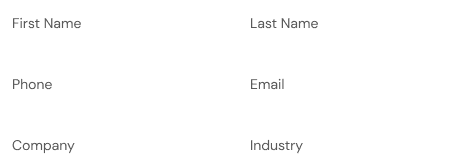
With the pandemic gradually receding, more businesses are adapting to new work models, either with a remote or hybrid setup. However, some business leaders still want to go back to the pre-Covid office environment, when every staff member was required to go to the office. This desire stems from the concern that their employees aren’t as productive at home compared to how they would be in the office.
In Microsoft’s survey, they discovered that leaders are still questioning if their employees are productive. While the majority of employees report that they are productive — with the productivity signals in Microsoft 365 backing this up — 85% of leaders say that the shift to hybrid work has made it challenging to have confidence that employees are being productive.
Increasing workplace surveillance can also undermine employee trust and lead to “productivity theatre”, wherein employees make a show of being busy during designated work hours either by attending meetings or sending strategically scheduled emails, even when it’s not a productive use of their time.
This has led to productivity paranoia, which according to Microsoft is, “where leaders fear that lost productivity is due to employees not working, even though hours worked, the number of meetings and other activity metrics have increased.”
It’s important to address productivity paranoia, especially if it’s a mindset that business leaders and senior managers have so that it doesn’t impact overall morale and productivity. Productivity paranoia can actually lead to “quiet quitting” from employees, as mistrust from their supervisors can make employees feel disengaged and detached from their work.
What is productivity paranoia?
While the term “productivity paranoia” has only been coined in recent months, it’s a mindset that began during the peak of COVID-19 when organisations were in a completely remote work setup. Productivity paranoia has only persisted since then as more companies transition into a hybrid work environment.
According to WorkLife News, productivity paranoia not only refers to the fear of decreased productivity due to the remote or hybrid setup but also the uncertainty that employees are working as effectively as they should because they’re not physically present in the workplace.
Senior executives and business leaders with this mindset operate under the assumption that if they don’t see people working, then they must not be working. This breeds a lot of mistrust and can potentially create a toxic work environment, negatively impacting your employees’ well-being and leading them to feel burnt out as they try to prove themselves in terms of productivity and performance.
3 signs that you have productivity paranoia
It may be hard to accept that you have productivity paranoia, but understanding what productivity paranoia entails and the key indicators of this mindset can help you change your perspective and allow you to improve as a business leader.
We’ve shortlisted the three most common signs of productivity paranoia.
1. You’re micromanaging your staff
There’s a big difference between being hands-on and micromanaging, but it can be difficult for some business leaders to draw the line and see the difference between the two.
Micromanaging habits that business leaders should avoid include:
- Nitpicking methods: Micromanagers will ask for detailed plans and even contribute to developing them, but as a business leader, it’s important to focus on the results rather than the methods that your employees might use. Let your employees discover new methods and find their own paths.
- Taking over tasks: It’s normal for employees to ask for help at one point or another, but instead of swooping over and finishing the task yourself, take a step back and offer your insight to your employees so that they can fix the issue themselves.
- Requiring employees to be accountable only to you: Handling everyone’s reports and progress of work can be overwhelming, and it can negatively affect your employees’ quality of work. You can delegate this responsibility to your senior executives so that they can give the proper attention to junior employees’ work.
2. You’re overcompensating with tons of (unnecessary) meetings
Harvard Business Review’s research shows that the frequency and duration of meetings have steadily increased since the transition to remote and hybrid work. One reason for this is it’s much easier and more convenient to schedule meetings now that people don’t have to travel between different locations to attend them. Another reason is that newly promoted managers feel an increasing pressure to connect with their staff, hence, the scheduling of so many meetings.
However, over 92% of employees feel that these meetings are actually costly and ineffective. In fact, countless online interactions and meetings have led to “Zoom fatigue” a condition that significantly contributes to technostress.
Reducing meetings have proven to increase employee productivity because it empowers staff and gives them autonomy over their schedule. Instead of having to attend back-to-back meetings that have no positive impact, they can create their own to-do list and hold themselves accountable.
3. You’re constantly checking workplace surveillance on your remote staff
Workplace surveillance isn’t a new technology, but its popularity certainly spiked in recent years when organisations were forced to implement a remote work model.
Technology and tools under this category include:
- Employee monitoring software: This will offer functionalities such as time tracking, distraction management, and features to differentiate between productive and unproductive activities.
- Email monitoring: The office IT team or administrator may have complete control over employees’ email inboxes, though the only valid reason to use email monitoring is to check if employees are using their official email IDs to send out private email messages.
- Activity tracking apps: This requires employees to record each task that is in progress or completed at specific time slots.
While there’s nothing inherently wrong with employee monitoring tools, the increased demand for workplace surveillance indicates that managers fear a loss of productivity if they can’t see their employees working. And this fear of loss has undermined the trust managers have built with their employees when they were still working in the office.
This fear of loss, combined with obsessive employee monitoring, has actually created problems that didn’t exist before the shift to remote and hybrid work. Constantly checking on employees and their work is a form of micromanagement that has increased the feeling of isolation among remote workers. The surveillance also increases stress and anxiety levels among employees. It emphasises that the number of hours an employee works is more important than the quality of their output, negatively affecting morale and job satisfaction.
When used correctly, built-in reporting and surveillance systems can actually help employees. They can prevent overworking and burnout by helping you delegate tasks when there’s too much work for individual employees. Even if you scale back your surveillance, management should still be transparent about what they’re monitoring and why so that it doesn’t erode employee trust and morale.
How to stop the mindset of productivity paranoia
It’s easier to change your mindset once you’ve identified the patterns or behaviours that you need to change. You can replace those bad habits with better ones so that you can manage your remote team effectively. Trusting your employees can give you a better understanding of the challenges they go through in their remote work process — it can be social isolation, lack of access to information or even too many distractions at home. Having an open and communicative relationship with your staff will allow you to help them spend their work hours more effectively while building trust and connection with them.
Giving freedom to your employees and empowering them in their work is crucial in remedying productivity paranoia, as well as nurturing genuine employee engagement with the goals and mission of your business.
If you develop strong foundations within your organisation — hiring the right people, training them well, having cultural alignment and making them understand and feel valued for the contribution they make to the success of the business — then there is nothing to be paranoid about because the results will naturally follow suit.
Are you ready to create a culture of trust and transparency within your organisation? Contact us and we will help you thrive in a remote work environment.
Jump straight to a key chapter
Spending Too
Much Time
Onboarding?
your remote hiring in the
Philippines, excellently.
Say Goodbye to High Costs!
Request Your Free Consultation Today andSave a Massive 70% on Your Workforce!

Ready to thrive in a remote-first work environment?


